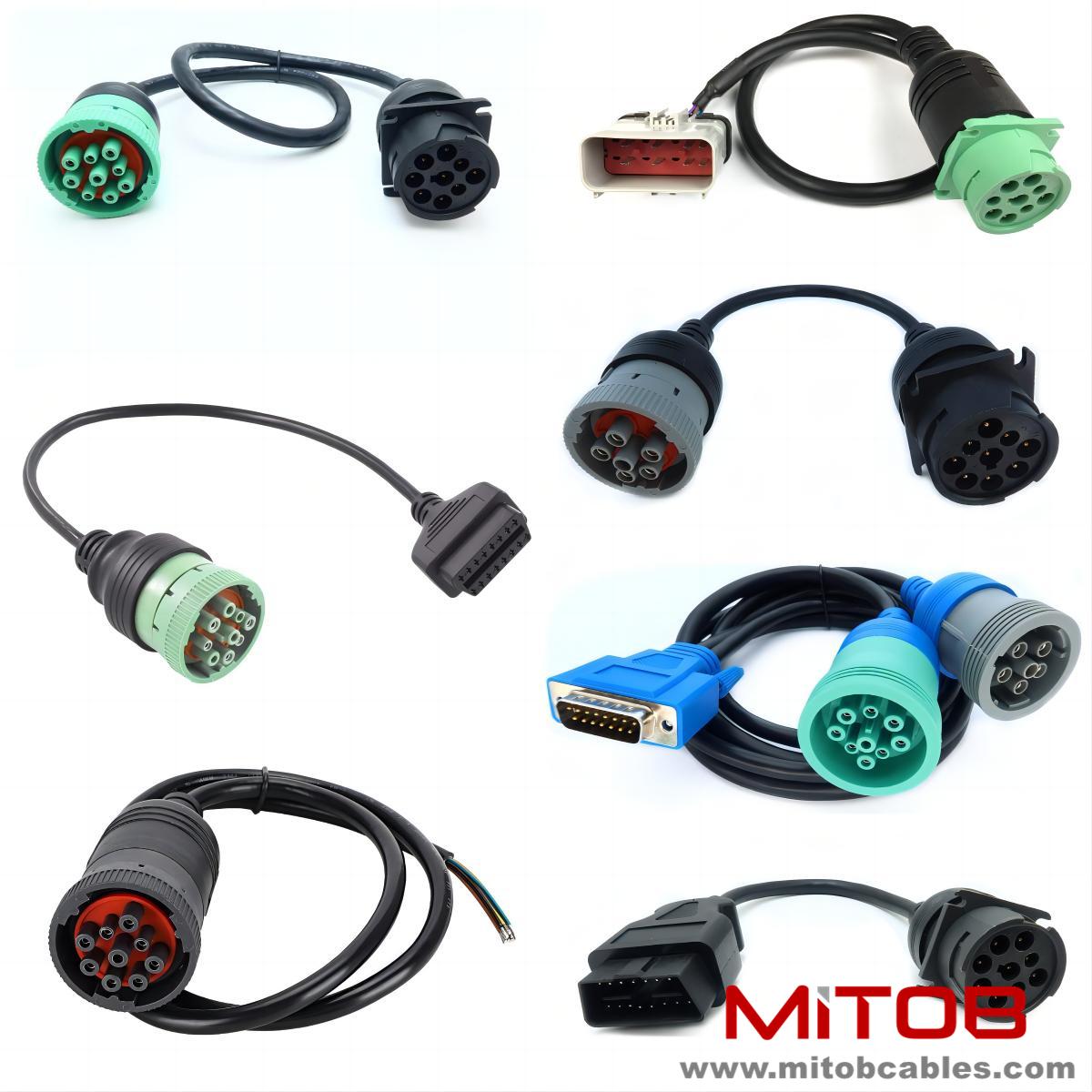In the field of automotive electronics, J1939 and OBD2 are two extremely important communication standards. J1939 is mainly used in large vehicles such as commercial vehicles and construction machinery, responsible for connecting electronic control units of key components such as engines, transmissions, and braking systems of vehicles, and achieving efficient communication between various systems of vehicles. OBD2 is a widely used on-board automatic diagnostic system for passenger cars, which facilitates fault diagnosis and performance monitoring for vehicle owners and maintenance personnel.

The J1939 to OBD2 cable is like a bridge, breaking down the barrier between two communication standards. It can convert data transmitted under the J1939 protocol into a format recognizable by the OBD2 protocol, and vice versa. Its working principle is based on complex protocol conversion technology, which uses built-in chips or circuits to parse, reassemble, and convert data from different protocols, ensuring accurate and error free transmission of data between different systems.
This type of cable has a wide range of applications in automotive maintenance, inspection, and vehicle data monitoring. In the automotive maintenance scenario, maintenance personnel can use the J1939 to OBD2 cable and universal OBD2 diagnostic equipment to diagnose faults in commercial vehicles that originally only supported J1939 communication. This greatly improves maintenance efficiency and reduces maintenance costs, as repair shops do not need to equip multiple diagnostic devices for different types of vehicles. At the vehicle inspection station, through this cable, inspectors can obtain more comprehensive vehicle information and make more accurate evaluations of the vehicle's emissions, safety performance, etc. In addition, for some fleet management systems that require real-time monitoring of vehicle data, J1939 to OBD2 cables can transmit various operational data of vehicles, such as vehicle speed, fuel consumption, engine speed, etc., to the management platform in a unified manner, facilitating monitoring and scheduling by management personnel.
The emergence of J1939 to OBD2 cable has many advantages. It improves the universality of the equipment and reduces the purchase cost of the equipment. At the same time, it simplifies the complexity of vehicle communication systems, making communication and diagnosis of different types of vehicles more convenient. However, it also faces some challenges. Due to the differences between J1939 and OBD2 protocols, there may be data loss or errors during the data conversion process, and more advanced technologies and algorithms are needed to ensure the integrity and accuracy of the data. Moreover, with the continuous development of automotive technology, new communication standards and protocols may emerge, which requires J1939 to OBD2 cables to be continuously upgraded and optimized to meet new demands.
The J1939 to OBD2 cable plays an indispensable role in the field of automotive communication, providing convenience for communication and diagnosis of different types of vehicles and promoting the development of automotive electronic technology. With the continuous advancement of technology, we believe it will demonstrate greater value in the future automotive industry.
Contact: Kevin
Phone: 0086-18823374992
E-mail: kevin@mitobcable.com
Whatsapp:
Add: Bld B2, Floor7 , Xinghe Zhongkai AI Industrial Park, Zhongkai High-tech Zone, Huizhou,China